6 Grocery Items Still Facing Shortages
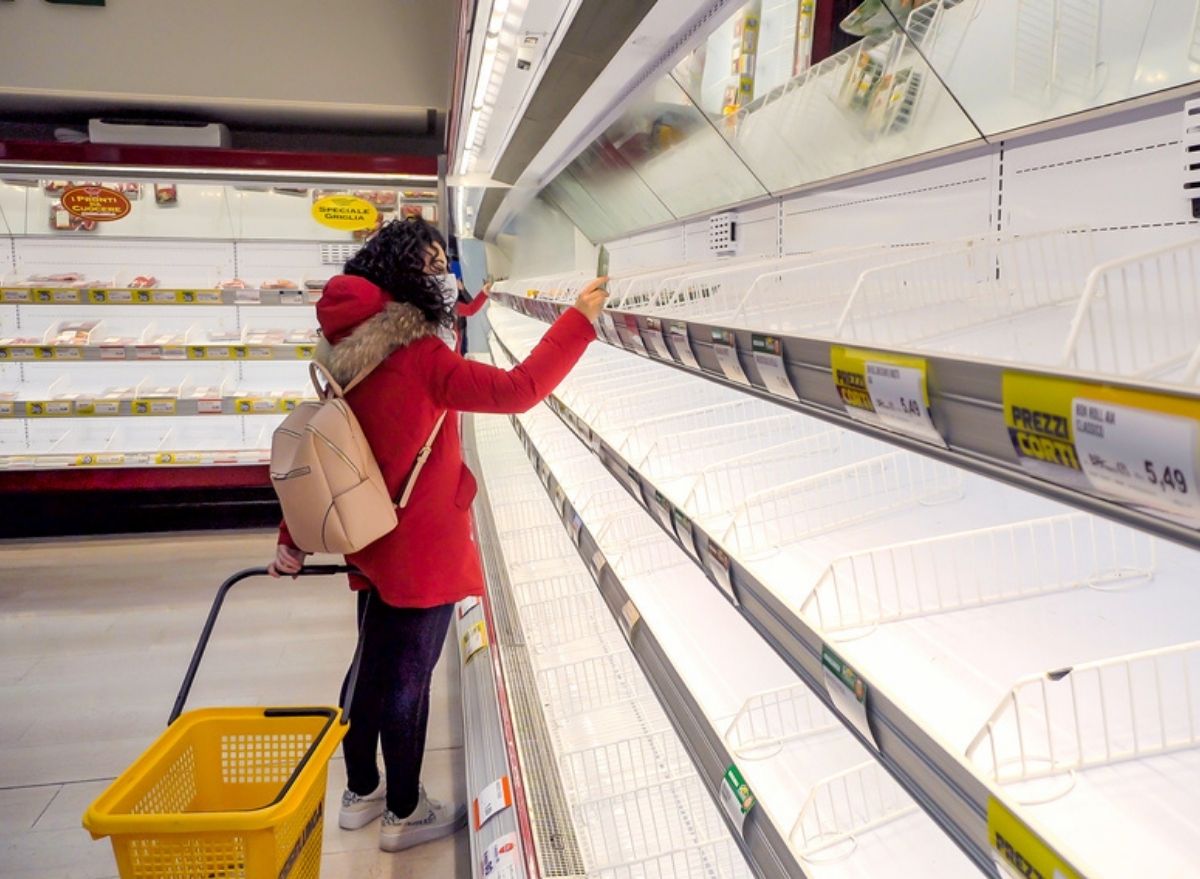
Manufacturers and stores alike are trying to anticipate the best way to avoid the supply chain snarls that have followed the grocery sector for the past year, but there’s only so much they can control. Costs are going up due to a myriad of supply challenges, and shoppers are feeling the effects as prices keep rising.
We’ve seen shortages before, and with continuing disruptions to supply chains, we were bound to see them again. These are six of the products you’re likely to see running low—if you need them, you may have to plan more in advance, visit a couple of different stores, or shop for more plentiful alternatives to avoid the sight of empty store aisles. (For more changes you’ll see at the store soon, here are 6 Things You’ll See at Costco This Year.)
Milk
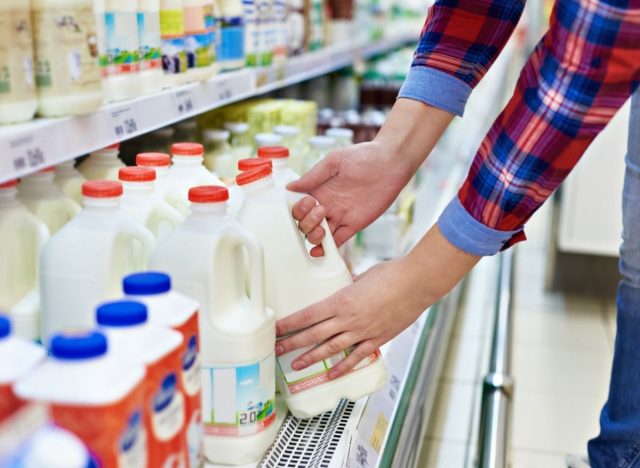
Got milk? Some grocery stores say they’re struggling to keep it on shelves. The USDA reported that milk is still in short supply compared to years prior, in small part because of reduced cow herds and in much larger part due to ongoing transportation, labor, and packaging shortages. Bryon Lehman, a local farmer and board member of Dairy Farmers of America from Wichita, Kan. gave KWCH-12 his perspective on the supply chain dilemma he and many U.S. farmers are facing.
“We have all the raw milk that’s needed. It’s more of a labor problem and processing,” Lehman said. “We’re no different out here on this farm. We can’t find the help that we need. We’re short of help…[And] we’re 80,000 semi drivers short in the United States now.”
Lehman added that he doesn’t expect an end to the shortage any time in the near term, so you may want to pour those glasses half-full for a while—or find a good substitute to tide you over.
Canned Goods
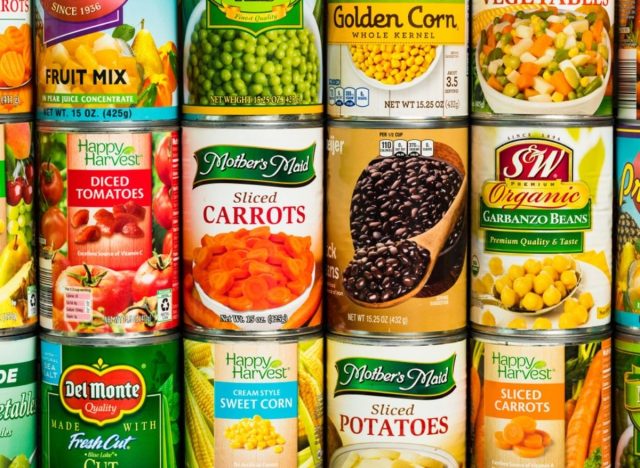
Having a cold drink in your hand might cost you a little more for a while. Aluminum remains in tenuous supply as prices peak from inventory deficits in China, one of the largest exporters of the material, reported Reuters. And the jump? A 24% price increase over the past six months, according to The Wall Street Journal.
At the same time, demand is higher than ever. The “candemic” that arose due to the recent popularity of canned beverages skyrocketed aluminum usage to unreachable heights. According to Waste Dive, the Ball Corporation said they “expect demand continuing to outstrip supply well into 2023.”
John Hayes, the CEO of Ball, told the site about other companies who want to venture into canned drinks, “We are capacity constrained, right now. The reality is, we don’t have the cans to supply those people that are looking to go into it.”
Because of the lack of supply, prepare for other canned goods to be short-stocked—soup, pet food, and alcohol, to name a few.
Cream Cheese
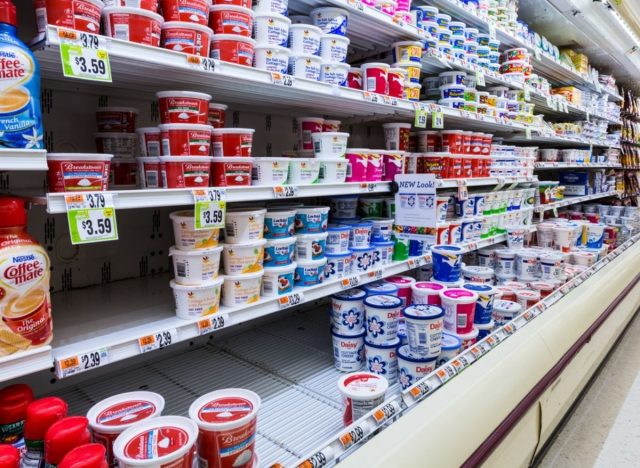
This whipped, spreadable bagel topping is still sparse on shelves. After COVID-related labor shortages and the cyberattack on Schreiber Foods hampered cream cheese production back in December, some areas have seen continuing short supply into late February. A local news outlet reported seeing the effects in a Vermont bagel shop. Tammy Fersing, the owner of the Burlington Bagel Bakery, told MyChamplainValley that her store is missing cream cheese due to shipping delays and delivery issues.
If you’re really in a pinch, you can join the ranks of everyone who learned how to make their own with this recipe from Insider.
Wheat, Corn, Soybeans, and Oats
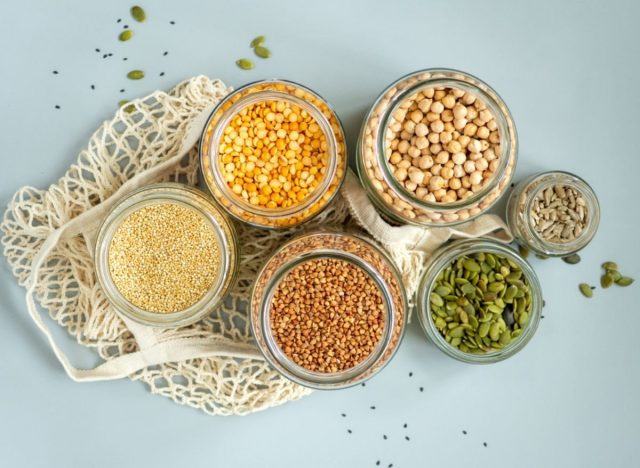
The already-tight supply of the world’s staple commodities took another hit with the Russian invasion of Ukraine. According to Food Dive, the two countries combined produce 29% of the wheat, 19% of the corn, and 80% of the sunflower oil for global exports. Back in February, they reported that the conflict could lead to increased corn and wheat prices, with a prediction of 20 to 30%. This leaves suppliers struggling to pay more to produce their products – like baked goods, pasta, packaged mixes, and more.
Pasta
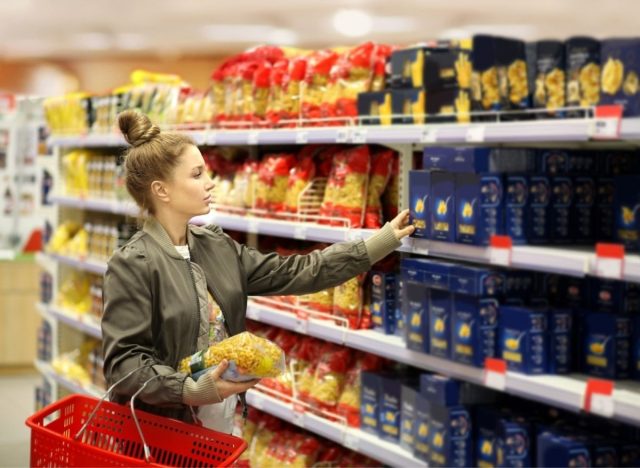
If you walked into your local grocery store and found the pasta aisle shockingly bare, you’re not the only one. Production for pasta has already been suffering from a lack of raw materials, especially durum wheat. Now, the conflict between Ukraine and Russia could put further pressure on wheat-based products. The two countries together produce over a quarter of the global wheat supply.
Senior research fellow at the International Food Policy Research Institute David Laborde told The New York Times in February that the upcoming wheat harvest will give an indication about how the commodity is faring. “By then, if farmers could not harvest due to lasting military operations, or if port facilities and railroads have been damaged, the situation will be particularly gloomy,” he said.
In the meantime, you may have better luck with finding gluten-free pasta—try subbing it in for your favorite Italian dish, without the wheat.
Avocados
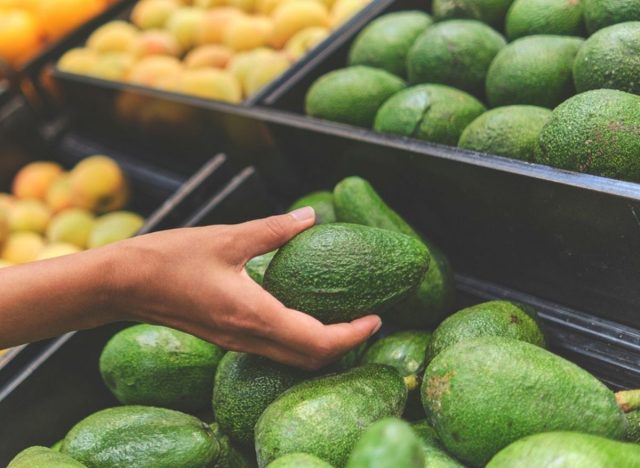
The popular heart-healthy fruit is going to be spread thin on your avocado toast for the next few brunches. Due to a combination of labor shortages and low rainfall, avocado production hasn’t kept up with booming demand, which has created higher prices. The various associated farming costs aren’t doing consumers any favors, either. Price increases for water, soil, labor, and freight all mean that you’ll be paying more for your guac fix.
On top of production issues, avocado imports to the U.S. from Mexico were delayed in February. An inspector was threatened for not certifying a shipment due to quality concerns, which led to the U.S. halting inspections, according to CBS News. With 80% of imported avocados supplied by Mexico, producers were left with a backup of harvested fruit and longer wait times to transport them to stores.
Luckily, These 6 Grocery Items Probably Won’t Face Shortages, Experts Say.